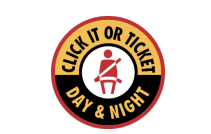
State Police
Michigan participates in the national Click It or Ticket campaignBy LIZ NASS
Capital News Service
LANSING — The use of seat belts is on the decline in Michigan, a state that has been a national leader in safety belt use, according to the latest statistics from the State Police.
The major reason is bad driving habits picked up during the COVID-19 pandemic, said Gary Bubar, a public affairs specialist in traffic safety at AAA Michigan.
A study by Michigan State University for the State Police shows use has decreased about 2% since 2019.
In 2023, Michigan’s buckle-up rate was 92.4%, a decline from 92.9% a year prior. The latest results were the lowest since 2004, when the rate was 90.5%.
The MSU study said that every 1% drop in seat belt use means 10 more fatalities and 100 more serious injuries on the state’s roadways.
“Most of us, including me, grew up with seat belts,” said Bradley Wieferich, the director of the Department of Transportation. “We always had. Parents buckled you in, and that was just what we did. To see that actually reversing is disturbing.”
Katie Bower, the director of the Office of Highway Safety Planning, said the data helps her agency understand the use of safety practices at the time of a crash.
“The whole mission of the Office of Highway Safety Planning is to ensure that we are promoting good, safe driving behaviors and helping to reduce serious injuries and fatalities on our roadways,” Bower said.
Bower said there were 1,123 fatalities in car accidents across the state in 2022. Among the victims, 223 drivers and front seat passengers were not buckled up.
Bower said men typically don’t wear their seat belts as often as women, and rural areas tend to have the lowest rates of seat belt use.
Gladwin County had the biggest decline in seat belt use over the last year, dropping by 5.2%. It had the lowest rate of use in the Lower Peninsula.
Other counties with the lowest rate of seat belt use were Gogebic, Ontonagon, Keweenaw, Baraga, Iron, Schoolcraft and Wayne.
Bubar said the leading reason for the decline is because people simply forget to buckle up before driving.
However, Bubar said he’s seen anecdotal evidence that the pandemic is responsible for some of the change.
“We weren’t going to as many places and we were hanging around home a little bit more,” Bubar said. “We didn’t continue that habit of putting our belts on before we started the car. Like any other habit, if you stop doing it, it’ll go away.”
Bubar said there was also a perception during the pandemic that law enforcement officers were not around to enforce the seat belt law and to issue tickets for dangerous practices, such as speeding and drunk driving.
Ron Wiles, the deputy director of the Michigan Association of Chiefs of Police in Okemos, said there was less engagement between police and the public in traffic stops during the pandemic because of fear of the virus spreading. That resulted in fewer traffic stops in general.
Wiles said that lack of enforcement has led to a general increase in unsafe driving behaviors.
He said the number of traffic stops has still not recovered because of staffing problems that law enforcement agencies are seeing.
The trend of unsafe driving behaviors has continued this year, he said.
“Police still have to respond to calls for service, which is the important part in making sure people are safe,” Wiles said. “But as a result, sometimes traffic safety and traffic enforcement and traffic stops get cut or ignored.”
Bower said the lack of traffic stops may make drivers feel “emboldened” to break the seat belt law.
She said she hopes to see more traffic stops and more good behavior by drivers.
Bower said other factors also could have led to reduced seat belt use during the pandemic, such as solo driving instead of carpooling and sharing rides, which she said leads to more unsafe driving.
Bubar said that Michigan is usually within the top 10 states in seat belt use because of its strong child and passenger safety laws and high enforcement level in the last 30 years.
The national average of drivers wearing seat belts was 91.6% in 2022, contrasted with Michigan’s 92.9%, according to the National Highway Traffic and Safety Administration.
Bubar said half of the traffic deaths nationally happened because an occupant was unrestrained and 60% of backseat passengers who are killed in an accident die due to their failure to wear seat belts.
“It’s not just a law enforcement issue,” Wiles said. “This is a Michigan issue and, hopefully, through education and raising awareness, we can help people better understand the importance of these dangerous driving behaviors.”
Bower said the “Click It or Ticket” promotional and educational campaign has increased compliance since 2009.
Bower also said continuing enforcement is pertinent because Michigan allows police to pull over a driver just for not wearing a seat belt, even without another traffic violation.
“Once you’re in a crash, there’s not many things that can help you in that vehicle,” Wilse said. “Technology is great – there’s airbags and all that – but that seat belt is so important to keeping our motorists safe, and hopefully alive and not seriously injured.”